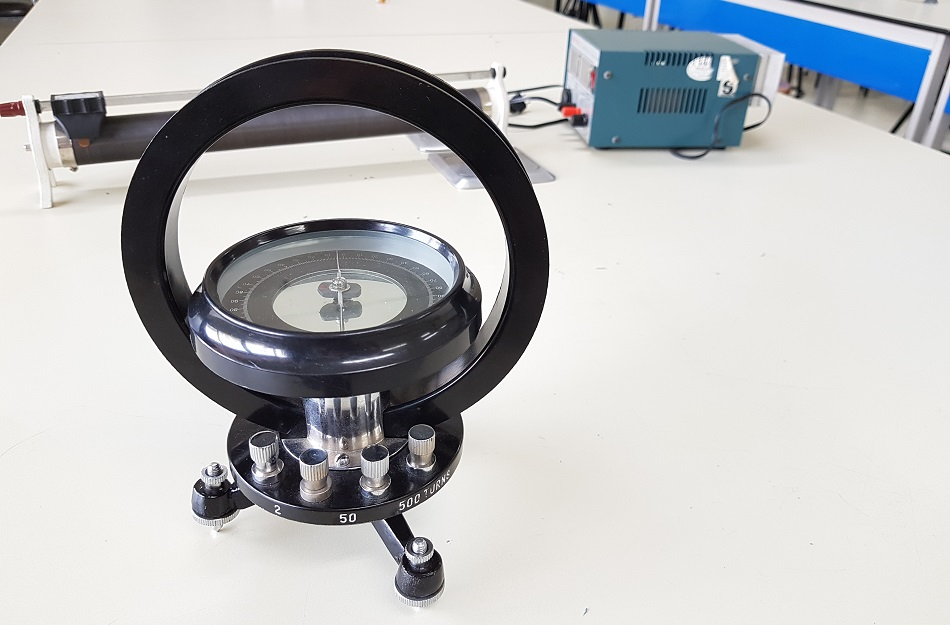By Kalwinder KaurFeb 1 2013

Image Credit: C_banglieng/Shutterstock.com
A galvanometer is an instrument that detects an electric current by producing a rotary deflection of ‘a pointer’ with respect to the electric current flowing via a coil in a magnetic field. These were the first instruments used for detecting and measuring electric currents. Sensitive galvanometers have the potential to detect electrical impulses of the brain and heart, as well as the signals transmitted from long submarine cables.
The following video demonstrates the basic principle to a galvanometer:
Galvanometer Principle
Research
Increasing demand for extended status messages from galvanometer-based scan heads and the requirements of processing laser materials for use in industries have resulted in the development of digital servo controls for use in galvanometers.
The novel control algorithms for a digitally controlled scan system have created a need for highly improved dynamics when compared to an analog model that only has very few parameters for tuning the system. In addition, the data acquired during a digital scan system control can be used for further processing.
In 2005, Sabo D.A presented a paper that discusses the benefits of real-time feedback in laser-based materials processing applications and the methods of using process parameters for advanced laser control, application development and quality control.
In 2011, Duma VF from the Aurel Vlaicu University of Arad analyzed three scanning functions of galvanometer-based scanners including the sinusoidal, triangular and sawtooth functions. These functions are experimentally determined with respect to the scan parameters of the input signal such as amplitude and frequency. The team studied the difference in the output functions of the galvanometer-based scanners, which are measured as the positional errors of an oscillatory mirror.
This research team also focused on their limits in terms of linearity and duty cycle for different scanning parameters. The scan amplitude’s stable oscillatory regime for the galvo mirror was also highlighted. Finally, they tested the three scanning functions with the help of a Fourier domain optical coherence tomography setup and obtained results using the correlation of the determined limits of the scanning parameters with the optical coherence tomography requirements.
Current Applications
One of the most important early uses of galvanometers includes detecting errors in telecommunications cables. However, this application was superseded by the introduction of time-domain reflectometers. Galvanometers were also used for positioning the pens in analog strip chart recorders such as polygraphs, electroencephalographs and electrocardiographs.
Currently, the galvanometer mechanism is used in positioning and control systems. Mirror galvanometers are used as beam steering and beam positioning elements in laser scanning technology. The galvanometers used for beam steering applications are designed to achieve a frequency response of over 10 kHz. Closed-loop mirror galvanometers are mainly used in imaging applications including stereolithography, optical coherence tomography, and retinal scanning. Open loop mirror galvanometers find applications in space systems, imaging devices, printing machines and laser-based barcode scanners.
Future Development
Galvanometers have been used for creating accurate measurements since the early 19th century. Communications are positively influenced by the galvanometer technology. The mirror galvanometer, in particular, was used for several years to position pens capable of recording results during an electrocardiogram.
Although further advances in the galvanometer technology have eclipsed some of the former uses of the galvanometer, the device is still relevant. For instance, mirror galvanometers are in demand for use in laser optical systems as beam positioning equipment.
In addition Cambridge Technology, a leader in galvanometer-based optical scanning technology, have a product that proves effective for large aperture scanning applications. The optimization of the model 6250H galvanometer from the product line of magnet galvanometers ensures maximum performance of 30-50mm apertures.
Galvanometer-based optical scanning products provide efficient scanning performance to a wide range of applications that include machining, laser marking and biomedical applications including DNA sequencing.
Sources and Further Reading
- MIT Physics Demo - Galvanometer Principle
- Sabo D.A., Brunner D, Engelmayer A. Advantages of digital servo amplifiers for control of a galvanometer based optical scanning system. 2005. Optical Scanning. Proceedings of the SPIE, Volume 5873, pp. 113-120.
- Duma VF, Lee KS, Meemon P, Rolland JP. Experimental investigations of the scanning functions of galvanometer-based scanners with applications in OCT. Appl Opt. 2011 Oct 10;50(29):5735-49.
This article was updated on 13th February, 2020.
Disclaimer: The views expressed here are those of the author expressed in their private capacity and do not necessarily represent the views of AZoM.com Limited T/A AZoNetwork the owner and operator of this website. This disclaimer forms part of the Terms and conditions of use of this website.